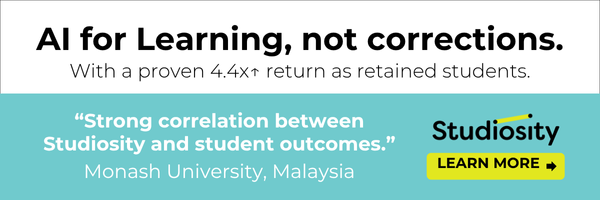At the University of Guelph, the fight against avian flu is campus wide. It's underway in virology and animal health labs, in offices and lecture halls, across training platforms and AI solutions and in test tubes filled with innovative vaccines.
Research is often a slow burn. But this year, there's an urgency in the air as a question echoes through many U of G minds:
Is a human pandemic worse than COVID-19 lurking in our midst?
"This is not just a crisis for the poultry industry," says Dr. Shayan Sharif, immunology professor at U of G's Ontario Veterinary College (OVC). "This is a crisis for humanity."
For more than 20 years, Sharif has been one of the world's leading experts on avian flu. Amid headlines of highly pathogenic avian influenza (HPAI) H5N1 devastating the poultry industry - driving up egg prices, killing wild birds, sending humans to hospitals, even infecting our pets and their food - he sees the virus as humanity's "grand challenge," one that requires all disciplines to work together.
"This is not a siloed issue or a competition," he says. "It is a problem that requires an ecosystem of health professionals, virologists, epidemiologists, computer scientists, engineers and more. When we don't collaborate, we put our food security - and national security - at risk."

Dr. Shayan Sharif and his lab team, left to right: Dr. Fatemeh Fazel, Janan Shoja Doost, Maya Dayoub, Dr. Shayan Sharif, Dr. Nitish Boodhoo, Marzieha Soltani Koupaei and Mina Khoshbazm Farimeni
It's a dizzying call to action. And yet Sharif remains optimistic. As interim vice-president of research and innovation, Sharif makes a dedicated effort to bring people together and break down the disciplinary barriers so common in academia.
He and others are part of a decades-long history of U of G researchers leading the fight against avian flu and generating the knowledge to cover a full spectrum of responses:
"Predict, prevent, contain," says Sharif. "That is the work the University is doing."
Investment into research, laboratory testing and infrastructure from the Ontario Agri-Food Innovation Alliance - a collaboration between U of G, the Government of Ontario and its agency Agricultural Research and Innovation Ontario - helps put U of G researchers everywhere they can be: in labs and on farms, developing new vaccines, analyzing bird samples and using AI to forecast outbreaks.
Their shared mission is to understand, control and, one day, remove avian flu as a public threat.
U of G researchers tracking avian flu on the ground, online
On the front lines is the Ontario and Nunavut regional centre of Canadian Wildlife Health Cooperative (CWHC). Led by Dr. Claire Jardine, pathobiology professor at OVC, the centre receives calls about dead wild animals and brings samples in for testing as they search for positive H5N1 cases.
The CWHC has been involved in avian flu surveillance in wildlife since 2005, but testing increased significantly with the first detection of HPAI in Ontario in 2022.
"We need to know where avian flu is and what strains are circulating right now," says Jardine. "That information fuels further research."
For sample testing, Jardine works with the Animal Health Lab at U of G, headed by Dr. Maria Spinato and supported by the Alliance.
If results are positive at the AHL, samples are sent to the Canadian Food Inspection Agency's National Centre for Foreign Animal Disease in Winnipeg. There, they conduct additional testing, contributing to national and international surveillance efforts.
Jardine is also leading a collaborative project supported by an Alliance Special Initiatives grant to identify environmental and biosecurity risk factors among farms hit by avian flu - helping producers understand what strategies offer the best protection.
While Jardine and her team are on the ground, others at U of G are on digital terrain.
Tapping into AI to predict avian flu outbreaks
Professors like Dr. Rozita Dara are using AI to predict outbreaks up to four weeks in advance.
One surprising source of information: social media.
"People talk online before outbreaks are officially reported, and we track their sentiments," says Dara, a computer science professor in the College of Engineering and Physical Sciences. "But we also use satellite images, land cover data, wetland density, weather, backyard poultry presence - incredibly diverse sources."
Dara's focus is to develop better predictive models for avian flu outbreaks using traditional machine learning and AI to analyze this information.
Her ultimate goal? A decision support system (DSS), a surveillance tool that can be used by emergency responders and health officials during an outbreak.
This DSS utilizes advanced and traditional machine learning methods and a dashboard to clean, process, analyze and visualize relevant trends and predictions for enhanced decision making.
The tool would be capable of investigating potential outbreak regions, deciding which quarantine measures would be most effective, assessing the economic impact of interventions and overall guiding public health responses.
"But it has to be privacy-preserving, user-friendly and ethical," she says. "We take a holistic approach to developing a surveillance tool, and I hope, in the future, organizations can build these ethical principles into their own systems."
Many other U of G researchers are in the fight.
- Dr. Amir Aliabadi in the School of Engineering studies the impact of weather and climate on the virus
- Pathobiologist Dr. Scott Weese in OVC focuses on emerging infectious diseases in wildlife and domestic animals, with an aim to educate decision-makers and the general public on pertinent updates
- Dr. Zvonimir Poljak studies the epidemiology of the disease - how it transmits and what genetic markers propel its spread
- Drs. Lauren Grant and Jane Parmley in OVC use a One Health approach to analyze current surveillance systems and improve the people and policy side of managing outbreaks.
Finding the perfect vaccine for birds
Meanwhile, Sharif searches for the ultimate tool.
"If we can find a vaccine that can prevent clinical signs, stop infection and prevent shedding of the virus in the environment, that would be my holy grail," says Sharif.
As Sharif works on developing better vaccination platforms for birds, it is a game of pros and cons. mRNA vaccines are effective and highly adaptable to new strains, but they're costly. Nasal spray vaccines are more cost effective but have difficulty imparting long-lasting immunity. Vaccines injected straight into eggs, three days before hatching, provide great immunity at early stages, but current research is limited.
"I wish I could say a commercially available vaccine for Canadian poultry is around the corner, but there is so much work to be done."
Despite his efforts and achievements, Sharif can't help but feel he's not doing enough, especially as updates emerge: Offspring of marine animals are dying of H5N1 at an alarming rate. The first case of human avian flu in Canada does not bode well for health care capacity, as a teenager in British Columbia was given top-notch medical treatment but still took months to recover.
"We need the support of governments - federal, provincial and territorial," he says. "In the meantime, what we can do as researchers is de-silo our activities and work together. The virus certainly cannot be conquered if we work alone."












